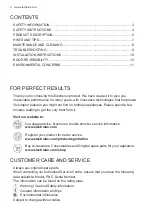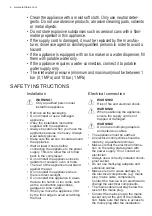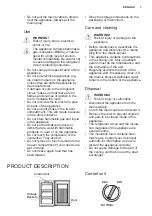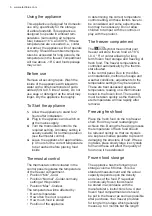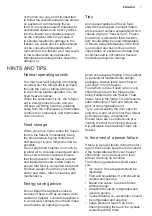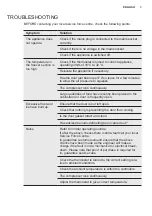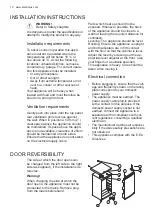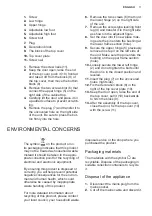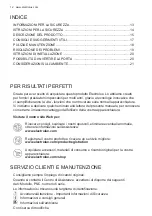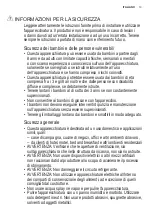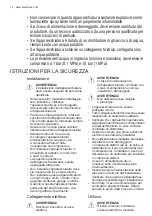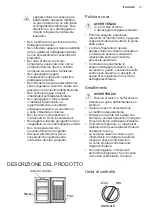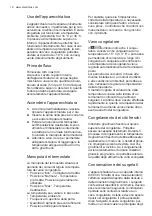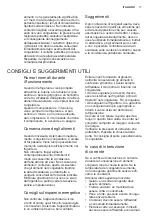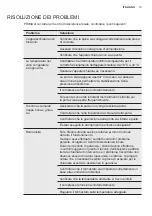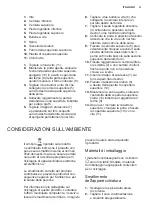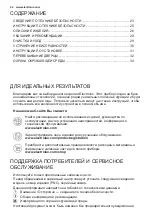
7
ENGLISH
of the time can vary and it is important
to follow the recommended times shown
on packets of commercially frozen
food. Do not place sealed containers or
carbonated liquids such as fizzy drinks
into the freezer as it creates pressure
on the container which may cause it
to explode resulting to damage to the
freezer. Ice cubes and ice lollies should
not be consumed immediately after
removal from the freezer as it may result
in low temperature skin abrasions.
Manufacturers storage times should be
adhered to.
Tips
Any opened packets of frozen food,
should be rewrapped in airtight materi-
als to prevent surface evaporation which
causes drying or “freezer burn”. Frozen
food which is allowed to thaw acciden-
tally should either be used immediately
or thrown away. Alternatively if the food
is uncooked and has not been aim to
check dates on packets and rotate than
recommended is not harmful, flavours
and textures begin to change.
HINTS AND TIPS
Normal operating sounds
You may hear faint gurgling or bubbling
sounds when the refrigerant is pumped
through the coils or tubing at the rear,
to the cooling plate/evaporator or to the
fixed freezer shelves.
When the compressor is on, the refriger-
ant is being pumped round, and you
will hear a whirring sound or pulsating
noise from the compressor. A thermostat
controls the compressor, and thermostat
cuts in and out.
Food storage
When you arrive home, place the frozen
food in the freezer immediately. Keep
the time between buying chilled food
and placing it in your fridge as short as
possible.
Do not push food together too much; try
to allow air to circulate around each item.
Do not store food uncovered. Ensure
that food placed in the freezer is dated
and labeled and used in date order to
ensure that food is consumed at its best.
Remove suspect food from your refrig-
erator and clean, refer to cleaning and
maintenance.
Energy saving advice
Do not install the appliance close to
sources of heat, such as a cooker, dish-
washer or radiator. Locate the appliance
in a cool well- ventilated room and make
sure that the air openings is good.
Avoid unnecessary frosting in the cabinet
by packing all foodstuffs into airtight
packages. Always leave warm food to
cool down in room freezer.
Food which is to be frozen (when cool)
should be placed in the fridge before
being transferred to the freezer. Thaw
frozen food in the fridge. This will ensure
safer defrosting of food and reduce the
work of the refrigeration unit.
Try to avoid keeping the door open for
long time, warm air will enter the cabinet,
and cause energy consumption.
Ensure there are no obstructions pre-
venting the door from closing properly.
It is advisable to periodically clean the
freezer.
In the event of a power failure
If there is a power failure during the stor-
age of frozen food, keep the door closed.
If the temperature within your freezer
should rise, do not refreeze the food
without checking its condition.
The following guidelines should assist
you:
• Ice cream :Once thawed should be
discarded.
• Fruit and vegetables: If soft should be
cooked and used up.
• Bread and cakes: Can be refrozen
without danger.
•
Shellfish:Should be refrigerated and
used up quickly.
• Cooked dishes: i.e. casseroles, should
be refrigerated and used up.
• Large pieces of meat: Can be re-
frozen providing there are ice crystals
remaining within them.
Содержание EUT700AOW
Страница 35: ...35 РУССКИЙ ...
Страница 36: ...electrolux com shop ...


